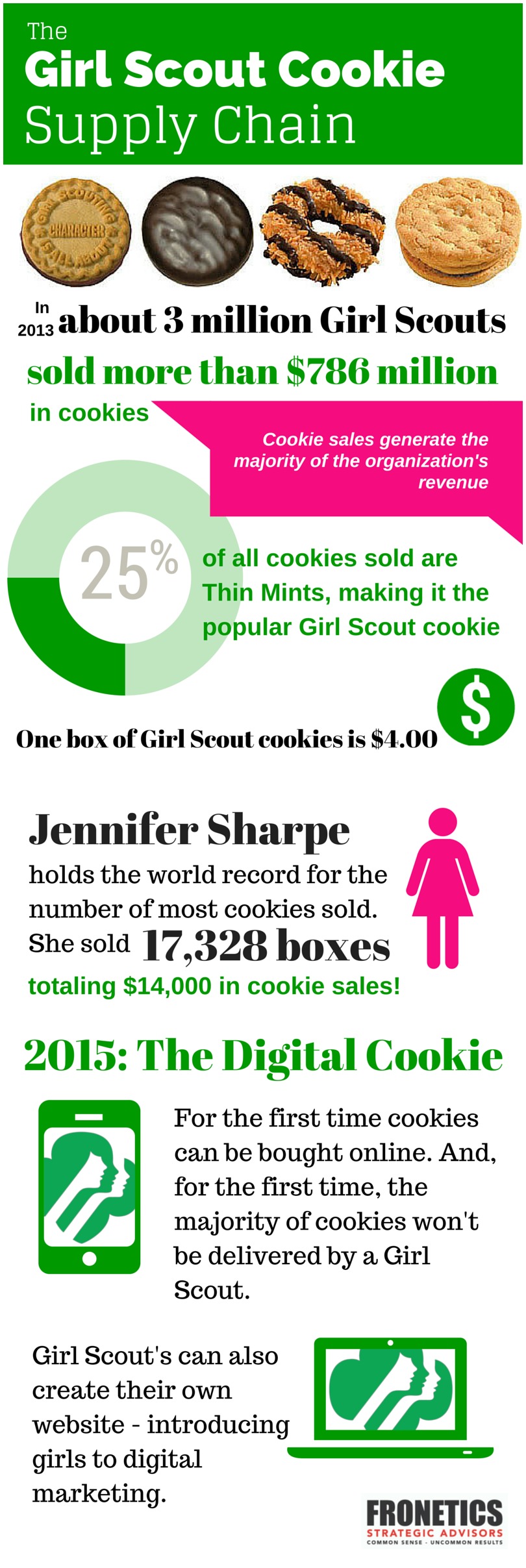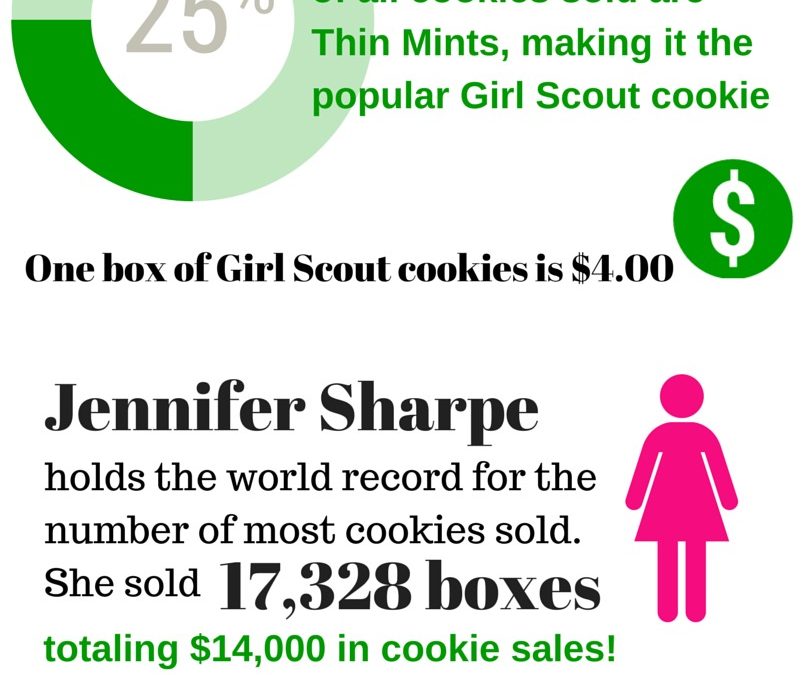In 2015 The Girl Scouts launched the “Digital Cookie.” How will this impact the Girl Scout Cookie Supply Chain?
When the Girl Scouts of America began selling their now ubiquitous cookies way back in 1917, their operations were simple: cookies were baked in the ovens of troop members and sold in a high school cafeteria. On a mission to raise enough funds to cover the activities of their Muskogee, Oklahoma-based troop, these first cookie salesgirls unknowingly set the stage for a century-long operation that now includes over 2.8 million Girl Scouts and tops $700 million annually.
Throughout the program’s history, the Girl Scouts have made significant changes to the way they do business. To understand the evolution of their supply chain you have to look not only at the physical growth of the program, but the societal factors that have shaped their manufacturing, distribution, marketing and sales functions throughout the years.
From the cookie program’s modest beginnings in the late 1910s through the 1920s, operations were kept small and simple. Cars weren’t yet pervasive in American cities and towns, and door-to-door sales and delivery of goods were the norm. As such, each local troop of Girl Scouts baked, packaged, and priced their own cookies and then combined marketing and sales functions by going door to door. The 1930s saw the Girl Scouts professionalize their manufacturing operations by partnering with and licensing their first commercial bakery – a move concurrent with the rise of automated and commercial bakeries across the United States.
During World War II, flour, sugar, and butter shortages caused a brief stoppage of Girl Scout cookie production. In the post-war boom though, the Girl Scouts were back in the cookie business, setting up shop outside the shopping malls that had sprung up in the suburbs.
As membership rapidly grew, cookie flavors were narrowed to four types in order to standardize their product for greater manufacturing efficiency. Meanwhile, advancements within the packaging industry proved to be a boon for the marketing and sales of Girl Scout cookies as it brought extension to the shelf-life of their products. The most dramatic shift in operations came in 1978. By that time, the number of commercial bakeries involved in the manufacture of GirlScout cookies had swelled to an unmanageable amount. That year officials made the decision to limit operations to only four bakeries, showing a commitment from the organization to uniform quality, packaging, and distribution (a practice even further evidenced today by their licensing of only two bakeries).
From the 1950s through 2014 the sales and marketing strategy of Girl Scout cookies has remained almost unchanged. Each year, between January and April, thousands of girls and their parents have sold cookies by going door-to-door or by hawking their wares outside local supermarkets.
In 2015, in a move that has significant implications for their supply chain, the Girl Scouts have unveiled a new strategy that is directly influenced by yet another societal shift. “Digital Cookie” enables Girl Scouts to market and sell cookies online.
With Digital Cookie, girls are able to create personalized cookie websites and invite customers to visit their website via an email invitation. Digital Cookie also allows girls to take in-person cookie orders (at a local cookie booth for example) via mobile app.
Additional features of Digital Cookie include: campaign advertising, inventory tracking, and shipping management.
Kelly Parisi, Girl Scouts of the USA chief communications executive, points out that these changes are essential in terms of building leadership skills: “It is all about the girls and building future business leaders. They are learning about e-marketing, managing money and additionally creating their first websites.”
The Digital Cookie will have a significant impact on the organization’s supply chain. Not the least of which is that this year, for the first time, the majority of customers will have cookies delivered directly to them – the option of having a Girl Scout deliver the cookies is only available in select markets.
Hungry? Connect with your local Girl Scout or Girl Scout Troop, or try the free mobile Cookie Finder app for your iPhone or Android phone.



